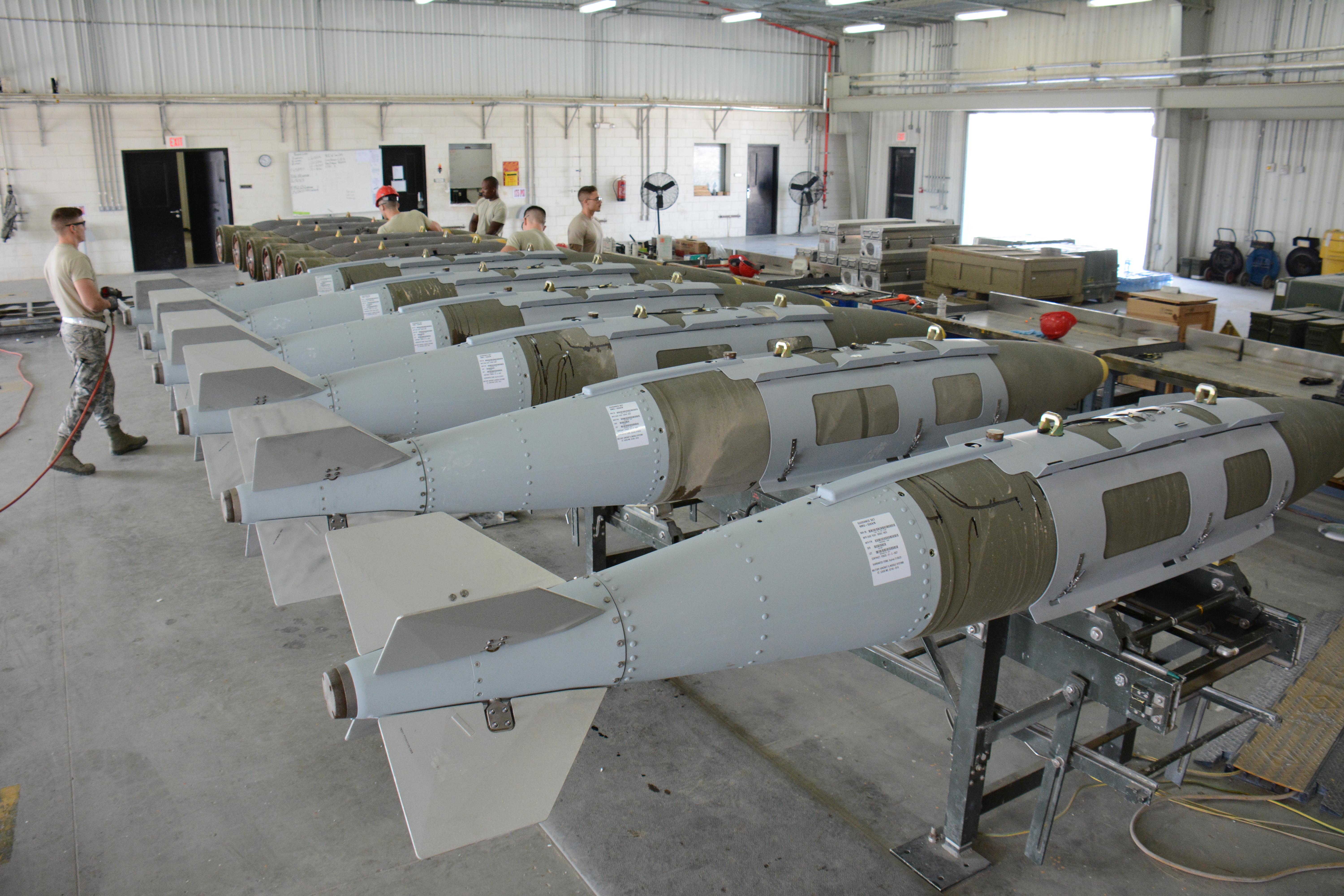
A dozen 2,000-pound joint direct attack munitions sit inside a warehouse at Al Udeid AB, Qatar, Dec. 17, 2015. Air Force photo by TSgt. James Hodgman.
The big surge in precision guided munitions production in the fiscal year 2019 budget request would continue for at least five years to replenish depleted Air Force stocks and allied stocks, according to a service spokeswoman.
In an email answer to questions from Air Force Magazine regarding the Fiscal 2019 budget request, the spokeswoman said the planned “maximum rate” production of Joint Direct Attack Munition satellite-guided bombs, Hellfire missiles, Advanced Precision-Kill Weapon System rockets, Small Diameter Bombs, and other “preferred munitions” would, if approved, continue “across the FYDP [Future Years Defense Plan] to replenish combat expenditures and build munitions inventories to meet future strategic needs.” Requirements will be periodically revisited, “as conditions change,” she said.
Former Air Force chief of staff retired Gen. Mark Welsh first raised concerns about low stocks of PGMs in late 2015, a year into Operation Inherent Resolve. The highly accurate weapons were being used almost exclusively because of rules of engagement demanding that civilian casualties and collateral damage be avoided in any way possible, and service officials admitted they were drawing heavily on war reserve stocks from other theaters.
Air Force top uniformed acquisition chief Lt. Gen. Arnold Bunch subsequently said manufacturers were being asked to ramp up production to replenish Air Force stocks, which were also being drawn on by coalition allies who had exhausted their own limited supplies. NATO allies did not take rapid action to restore their own stockpiles of munitions after the 2011 air war in Libya, and went into OIR in 2014 with low magazines. The US also supplied Middle East allies with munitions with the proviso that they be replaced.
The Air Force expects that allies will have made “payback” on borrowed munitions by the “third quarter, CY19,” the spokeswoman said, adding that some munitions “are already in payback.”
The Air Force requested large numbers of PGMs both in the fiscal year 2019 base budget and overseas contingency operations accounts. Budget officials said the buys would put munitions manufacturers at “maximum capacity” during the replenishment period, but did not initially say how long the production surge would be necessary.
Air Force Secretary Heather Wilson said in mid-February that USAF in the last year was using PGMs in the anti-ISIS fight “faster than we can make them.” She also said the goal is to achieve a “steady state” of production,without big surges or dips, in order to buy them more efficiently.
Speaking for Wilson, the spokeswoman said, “steady state is certainly a goal.” She added, “The current budget supports significant increases in munitions production and we will continue to assess expenditures and monitor current and future munitions requirements to work with our industry partners to establish sustainable production rates.”